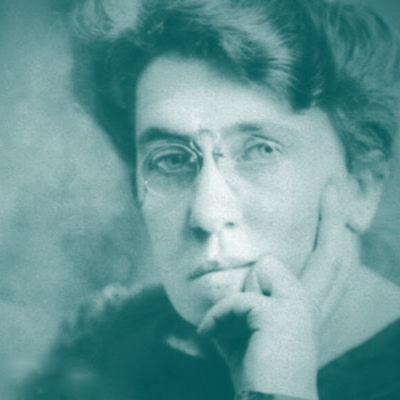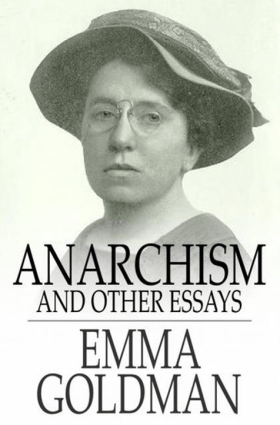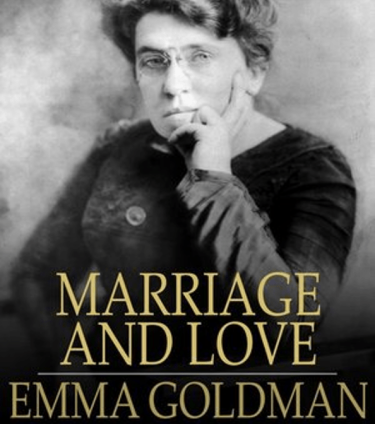Emma Goldman (1869–1940) stands among the most articulate and uncompromising advocates for cooperative, liberatory living. While often categorized narrowly as an anarchist, her philosophy contains a deep communitarian core: a vision of society organized around voluntary cooperation, mutual aid, and the full development of human potential unshackled from institutional domination. Her work challenges us to recognize that freedom and community are not opposites but interdependent forces – a position that resonates strongly with contemporary communitarian principles.

Emma Goldman advanced a communitarian ethic that fused personal liberty with collective responsibility, insisting that genuine freedom could only flourish in cooperative, self-organized communities. She championed mutual aid as the natural foundation of social life, rejecting state control and economic coercion in favor of voluntary association and shared provisioning.
In works such as Anarchism and Other Essays, Marriage and Love, and Living My Life, Goldman exposed how institutions like marriage privatized care, reinforced dependency, and isolated individuals from broader networks of support. Her alternative was a web of liberated relationships, where love, labor, and caregiving were freely chosen and sustained within the commons.
By linking the emancipation of personal bonds to the creation of cooperative structures, Goldman’s vision remains a vital contribution to communitarian principles and practices.
Freedom as a Social Condition, rather than an Individual Privilege
Goldman’s communitarian vision rejected the false dichotomy between individual liberty and collective responsibility. In Anarchism and Other Essays (1910), she argued that liberty could not exist in isolation; it required social arrangements that ensured no one’s freedom depended on the subjugation of another. This idea is central to Communitarian Union principles which are established on the premise that freedom is only meaningful when it is shared.
She contended that structures such as state militarism, exploitative labor systems, and patriarchal authority were not only oppressive to individuals, but equally corrosive to the fabric of community. By dismantling these structures, she envisioned communities built on self-governance, voluntary association, and collaborative provisioning – where cooperation is the natural outgrowth of respect for each person’s autonomy.
Mutual Aid as the Foundation of Social Life
Although Peter Kropotkin is more often credited with formalizing the principle of mutual aid, Goldman advanced and popularized it through her lectures and essays, particularly in Living My Life (1931). She framed mutual aid not as charity or sacrifice, but as an expression of shared humanity which creates a bond that strengthens both the giver and the receiver.
Goldman maintained that healthy communities required more than economic arrangements. She insisted that they required reciprocal care that could not be mandated by law, or otherwise enforced by bureaucracy. She championed the idea that relationships flourish when people act out of genuine solidarity, rather than fear of punishment or desire for reward.
This volume gathers Goldman’s most influential writings on anarchism, political repression, women’s emancipation, and the liberation of thought. Through incisive critique and vivid examples, she presents anarchism as a philosophy of cooperative living, personal responsibility, and the dismantling of oppressive power – principles resonating strongly with communitarian ideals.
Arguments Against Marriage
Liberation As Communal Necessity
Goldman’s opposition to marriage – most famously articulated in the essay Marriage and Love (1914) – was not merely a critique of personal relationships, but a critique of the institutional power structures that distort human connection. She saw marriage as:
- Economically coercive: In her lifetime as well as within many cultures across the globe still today, for many women, marriage was and remains the only socially sanctioned means of economic survival, binding them into dependency rather than fostering mutual contribution.
- Socially isolating: Legal marriage which demands privatized exclusive relationships, reinforces the nuclear family as an isolated economic unit, rather than encouraging extended networks of shared care that includes financial support capable of achieving and securing material security for those who contribute to the extended collaborative association – communal union.
- Legally restrictive: The state’s role in sanctioning intimate partnerships, she argued, transformed love into a contract subject to state oversight, eroding its voluntary nature.
Her alternative was not the abolition of deep, committed relationships, but their restructuring as freely chosen associations within a broader communal web. This approach aligns with the global network of communitarian union’s principles and practice of Liberated Love that prioritize shared responsibility for physical and emotional support and development of associates and the shared care of children, rather than confining those obligations to state-approved pairings.
Education & Cultural Life as Collective Endeavor
Goldman’s commitment to education was evident in her work with the Ferrer Modern School movement, which reflected her belief that the culture of a community shapes its capacity for freedom. In Anarchism and Other Essays, she stressed that education must be creative, critical, and emancipatory, cultivating individuals who can fully participate in and sustain participation in productive mutually beneficial cooperative relationships that form of the base of eco-social provisioning and conservation projects.
For Goldman, this meant creating spaces where people could develop skills along with the habits of dialogue, respect, and collective decision-making. Her approach foreshadowed communitarian educational practices that reject rote learning in favor of active engagement with the community’s shared needs and aspirations.
challenging the chains of convention, exposing marriage as an institution that stifles love and autonomy
In this essay, Goldman dismantles the romanticized image of marriage, portraying it as a legal and social construct that commodifies relationships and limits women’s freedom. She champions love as a voluntary, evolving bond that thrives best outside the confines of state and church control, aligning deeply with communitarian visions of mutual respect and equality.
The Mission: Voluntary Association & Shared Provision
Throughout her writings and activism, Goldman articulated a mission that aligns with a communitarian ethic of “sharing all with all”. She rejected central authority in favor of horizontal organization, where each participant contributes according to capacity and receives according to need. Her speeches repeatedly emphasized:
- Economic self-organization: Workers taking direct control over production and distribution of all that contributes to the support of healthy sustainable lifestyles.
- Collective resource stewardship: Land, tools, and assets managed for the benefit of all.
- International solidarity: Recognition that local communities are part of a global network of mutual support.
This mission emerges clearly in My Disillusionment in Russia (1923), where she criticized the Bolshevik state for betraying the principles of voluntary cooperation. For Goldman, community life could not thrive where participation was coerced or dissent was punished.
The Vision: Communal Unions realizing maximum Freedom & Creative Fulfillment
Goldman’s vision was expansive, embracing both the practical and the imaginative. In her later lectures and writings, she described a society where:
- Economic structures serve human needs rather than profit motives
- Social bonds are strengthened through shared responsibility and care
- Cultural life is enriched by authentic art, free thought, and open exchange
- Intimate relationships are freed from economic compulsion and legal coercion, allowing love to thrive as a mutual and voluntary gift.
She consistently tied this vision to the conditions of everyday life that encompassed housing, work, food, education, art, and relationships were all parts of a unified fabric which required both freedom and cooperation to hold together.
Selected Works Cited for Communitarian Values
Anarchism and Other Essays (1910) – Core exposition of her philosophy, integrating personal liberty with social responsibility.
Marriage and Love (1914) – Detailed argument against the institution of marriage as an economic and legal constraint, and a call for voluntary, community-based relationships.
Living My Life (1931) – Autobiographical account revealing her practical engagement in building communities of resistance and care.
My Disillusionment in Russia (1923) – Critical analysis of the failure of imposed collectivism, underscoring the necessity of voluntary association.
The Social Significance of the Modern Drama (1914) – Cultural critique connecting art to the struggle for communal freedom.
Liberating Relationships
In the context of Communitarian Union principles and practices, Emma Goldman’s legacy offers a critique of oppressive institutions alongside a coherent framework for building communities rooted in voluntary cooperation, mutual aid, and shared cultural life. She reminds communitarians that the work of creating a just and connected society is inseparable from the task of freeing ourselves and each other from the institutions that privatize, isolate, and commodify human relationships.


